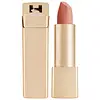Westman Atelier Squeaky Clean Liquid Lip Balm Versus Hourglass Cosmetics Unlocked Soft Matte Lipstick
What's inside
What's inside
 Key Ingredients
Key Ingredients

 Benefits
Benefits

 Concerns
Concerns

 Ingredients Side-by-side
Ingredients Side-by-side

Diisostearoyl Polyglyceryl-3 Dimer Dilinoleate
EmollientRicinus Communis Seed Oil
MaskingOctyldodecanol
EmollientPrunus Amygdalus Dulcis Oil
Skin ConditioningHydrogenated Vegetable Glyceride
EmollientSimmondsia Chinensis Seed Oil
EmollientMica
Cosmetic ColorantParfum
MaskingTocopherol
AntioxidantButyrospermum Parkii Butter
Skin ConditioningArgania Spinosa Kernel Oil
EmollientHelianthus Annuus Seed Oil
EmollientLimonene
PerfumingCitral
PerfumingLinalool
PerfumingCitronellol
PerfumingCI 77891
Cosmetic ColorantCI 77491
Cosmetic ColorantCI 77492
Cosmetic ColorantCI 77499
Cosmetic ColorantCI 75470
Cosmetic ColorantCI 77742
Cosmetic ColorantCI 15850
Cosmetic ColorantDiisostearoyl Polyglyceryl-3 Dimer Dilinoleate, Ricinus Communis Seed Oil, Octyldodecanol, Prunus Amygdalus Dulcis Oil, Hydrogenated Vegetable Glyceride, Simmondsia Chinensis Seed Oil, Mica, Parfum, Tocopherol, Butyrospermum Parkii Butter, Argania Spinosa Kernel Oil, Helianthus Annuus Seed Oil, Limonene, Citral, Linalool, Citronellol, CI 77891, CI 77491, CI 77492, CI 77499, CI 75470, CI 77742, CI 15850
Dimethicone
EmollientCaprylic/Capric Triglyceride
MaskingPolyglyceryl-2 Triisostearate
EmulsifyingSynthetic Wax
AbrasiveOctyldodecanol
EmollientPolysilicone-11
Polyhydroxystearic Acid
EmulsifyingTrimethylsiloxysilicate
EmollientDiisostearyl Malate
EmollientSilica
AbrasiveSynthetic Beeswax
Emulsion StabilisingDisteardimonium Hectorite
StabilisingSorbitan Isostearate
EmulsifyingCetyl PEG/PPG-10/1 Dimethicone
EmulsifyingCopernicia Cerifera Wax
Propylene Carbonate
SolventParfum
MaskingAluminum Hydroxide
EmollientMethicone
EmollientCI 15850
Cosmetic ColorantCI 15985
Cosmetic ColorantIron Oxides
CI 77891
Cosmetic ColorantDimethicone, Caprylic/Capric Triglyceride, Polyglyceryl-2 Triisostearate, Synthetic Wax, Octyldodecanol, Polysilicone-11, Polyhydroxystearic Acid, Trimethylsiloxysilicate, Diisostearyl Malate, Silica, Synthetic Beeswax, Disteardimonium Hectorite, Sorbitan Isostearate, Cetyl PEG/PPG-10/1 Dimethicone, Copernicia Cerifera Wax, Propylene Carbonate, Parfum, Aluminum Hydroxide, Methicone, CI 15850, CI 15985, Iron Oxides, CI 77891
Ingredients Explained
These ingredients are found in both products.
Ingredients higher up in an ingredient list are typically present in a larger amount.
Ci 15850 is the pigment color red. It is an azo dye and created synthetically.
Azo dyes need to be thoroughly purified before use. This allows them to be more stable and longer-lasting.
This ingredient is common in foundations, lipsticks, and blushes. This color is described as brown/orangey red.
It has many secondary names such as Red 6 and Red 7. According to a manufacturer, Red 6 usually contains aluminum.
Learn more about CI 15850Ci 77891 is a white pigment from Titanium dioxide. It is naturally found in minerals such as rutile and ilmenite.
It's main function is to add a white color to cosmetics. It can also be mixed with other colors to create different shades.
Ci 77891 is commonly found in sunscreens due to its ability to block UV rays.
Learn more about CI 77891Octyldodecanol is a fatty alcohol. It is primarily used to enhance the texture of products.
As an emulsifier, Octyldodecanol helps prevent the oils and waters from separating. It also prevents ingredients from creating foam when shaken.
Octyldodecanol is created by reducing fatty acid to an alcohol.
Due to its high molecular weight, it does not get absorbed into the skin.
Learn more about OctyldodecanolParfum is a catch-all term for an ingredient or more that is used to give a scent to products.
Also called "fragrance", this ingredient can be a blend of hundreds of chemicals or plant oils. This means every product with "fragrance" or "parfum" in the ingredients list is a different mixture.
For instance, Habanolide is a proprietary trade name for a specific aroma chemical. When used as a fragrance ingredient in cosmetics, most aroma chemicals fall under the broad labeling category of “FRAGRANCE” or “PARFUM” according to EU and US regulations.
The term 'parfum' or 'fragrance' is not regulated in many countries. In many cases, it is up to the brand to define this term.
For instance, many brands choose to label themselves as "fragrance-free" because they are not using synthetic fragrances. However, their products may still contain ingredients such as essential oils that are considered a fragrance by INCI standards.
One example is Calendula flower extract. Calendula is an essential oil that still imparts a scent or 'fragrance'.
Depending on the blend, the ingredients in the mixture can cause allergies and sensitivities on the skin. Some ingredients that are known EU allergens include linalool and citronellol.
Parfum can also be used to mask or cover an unpleasant scent.
The bottom line is: not all fragrances/parfum/ingredients are created equally. If you are worried about fragrances, we recommend taking a closer look at an ingredient. And of course, we always recommend speaking with a professional.
Learn more about Parfum